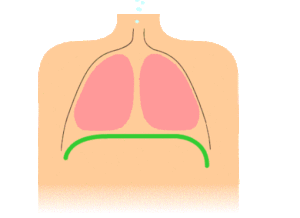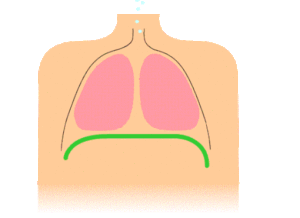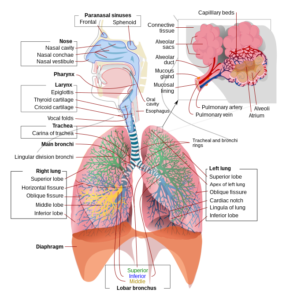Four Types Of Breathing
Breath is life.
The quality of your breathing is a powerful determinant of your physical and emotional state of being.
As a yoga teacher I try to emphasize that the physical yoga practice exists to serve the breath.
We are basically designed to create a solid vessel for the transport of breath.
The way I see it is that 5000 or so years ago a bunch of guys decided to sit around and explore their breathing as a means to go inside of the body and mind.
The initial yoga poses were simply seats of meditation.
And then they realized that sitting still was harder than they thought so why not develop some positions to work the body and better accommodate the breath.
Sometime later (some 3500 years), the Nath yogis got it into their heads that building a better body, which concurrently helped with the breath, was a means unto itself.
One of my main approaches is that the body is a machine (It isn’t really) with a very specific design. And we want to try to accommodate that design if at all possible.
There are numerous ways to breathe (four types of breathing in particular) but from my perspective, there is a best way that we would like to tap into and make natural.
This requires some fundamental changes to our posture but I think the effort is worth it.


Here are four types of breathing that are available to us:
- Diaphragmatic– On every inhale the diaphragm muscle is designed to lower minimizing the space in the abdominal cavity.This is why the belly pushes out with an inhale and why this is sometimes referred to as belly breathing.
- Thoracic- If the diaphragm doesn’t descend when we inhale the chest must expand to accommodate the air that has been sucked into the lungs.There is nothing wrong with employing thoracic breathing by choice. Certain types of yoga use it all the time.
But we don’t want it to be our default breathing pattern.
- Clavicular- Most people don’t realize just how much space the lungs take up in the body.The top of each lung is above the collarbone, or clavicle.
Clavicular breathing uses the whole lung and is mostly called upon during extreme exercise such as running marathons.
- Paradoxical- is a strange breathing occurrence where the chest compresses on the inhale rather than expands, in reverse of the normal movements.

Ideally, diaphragmatic breathing is our natural mode of breathing, and there can be numerous reasons why it isn’t.
Awareness of what type of breathing you most often employ is the start of changing the way you breathe to a different pattern.
And maybe a better pattern.

